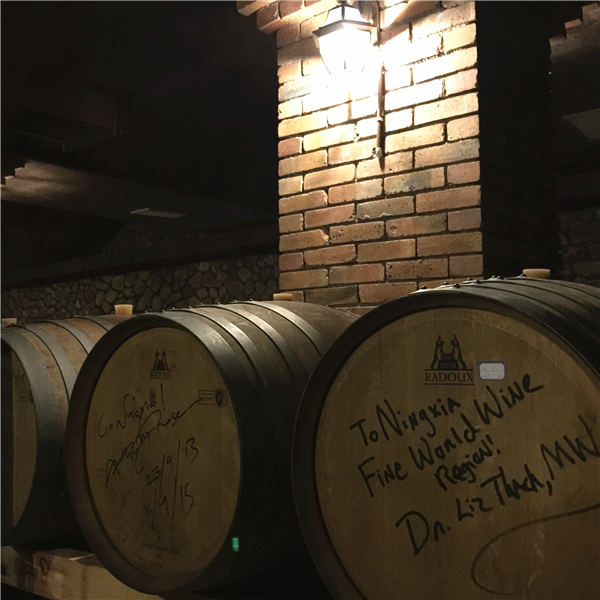Diary of a Ningxia wine harvest
 0 Comment(s)
0 Comment(s) Print
Print E-mail China Daily, October 16, 2015
E-mail China Daily, October 16, 2015
|
|
|
Photo by Mike Peters/China Daily |
"It's been in new oak for two years, and it's got everything: dark chocolate, violets - a flavor bomb," he pronounces. "Delicious."
It's easy to get caught up in the spell of Ningxia as a wine paradise, but there is much work still to be done. From big producers like China's behemoth Changyu, founded in 1892, or fresh-faced boutiques such as Helan Qingxue and Kanaan, the past decade's quest for quality has shifted focus from the grapes themselves to the growing process. One example: Chinese traditionally have let vines grow straight up, eager to get the most fruits, but a modern approach favors horizontally trained plants that produce fewer grapes of more consistent quality.
The "Ningxia terroir" - the style and qualities imparted by a region's soils and climate - has yet to be defined. All the winemakers I visit over the next three days agree that will be key to the region's future.
"It's too early to tell," says Lenz Moser, an Austrian who has partnered with Changyu's 10-year-old Ningxia chateau to create specialty wines with enough character to excite buyers in Europe.
"We have three soil types here: sandy, loamy and fertile (like Naples) and rocky (like Rhone valley), all shaped by the Yellow River sediments and Helan Mountain.
"There was 300 years of winemaking in Bordeaux before it became a classification in 1855," Moser adds.
"The oldest Ningxia wines you can taste are Jiabeilan from Helan Qingxue, which started 10 years ago.
"All we know is that you get perfect grapes," he says. "High sugar, brown seeds and high tannins. Little disease. What else as a wine maker do you want?"








Go to Forum >>0 Comment(s)